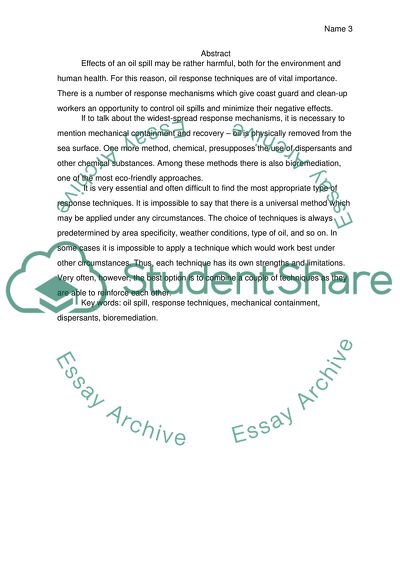Cite this document
(Main Techniques for Cleaning-Up Oil Spills Report Example | Topics and Well Written Essays - 2000 words, n.d.)
Main Techniques for Cleaning-Up Oil Spills Report Example | Topics and Well Written Essays - 2000 words. https://studentshare.org/environmental-studies/1873409-techniques-for-cleaning-up-oil-spills
Main Techniques for Cleaning-Up Oil Spills Report Example | Topics and Well Written Essays - 2000 words. https://studentshare.org/environmental-studies/1873409-techniques-for-cleaning-up-oil-spills
(Main Techniques for Cleaning-Up Oil Spills Report Example | Topics and Well Written Essays - 2000 Words)
Main Techniques for Cleaning-Up Oil Spills Report Example | Topics and Well Written Essays - 2000 Words. https://studentshare.org/environmental-studies/1873409-techniques-for-cleaning-up-oil-spills.
Main Techniques for Cleaning-Up Oil Spills Report Example | Topics and Well Written Essays - 2000 Words. https://studentshare.org/environmental-studies/1873409-techniques-for-cleaning-up-oil-spills.
“Main Techniques for Cleaning-Up Oil Spills Report Example | Topics and Well Written Essays - 2000 Words”. https://studentshare.org/environmental-studies/1873409-techniques-for-cleaning-up-oil-spills.


